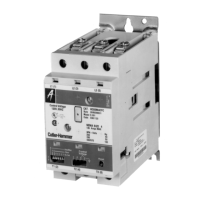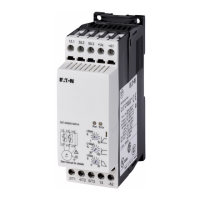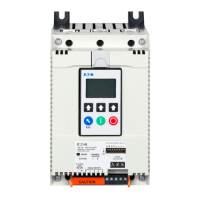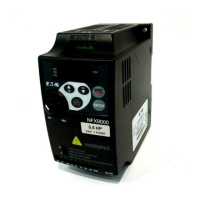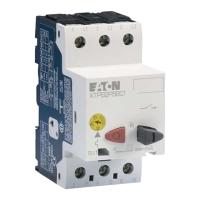EATON HFX Product Family Installation and Operation Manual E-ELCL-II002-E2 July 2019 31
17.0 FREQUENCY INPUT CIRCUIT
(PASSIVE REPRESENTATION)
Open Circuit mode:
• Pull to VLoad
• Pull to 5 V
• Pull to Ground
• Pull to 5 V & Ground
The frequency inputs function similar to the digital
inputs and add the ability to report the frequency
of the input signal. It features the same set of
parameters for conguring debounce, rising threshold
level, and falling threshold. These inputs also support
both Low-Side and High-Side input types. Although
it is dependent on the specic sensor, normally in
the case of a high side input (input is connected to
ground) the Pull to VLoad should be selected. In this
case it is important to make sure the sensor is rated
for the full load voltage. Normally in the case of a low
side input (input is connected to Battery +), the Pull
to Ground option should be selected.
There are 8, 6, 4, or 2 inputs that can be congured
as Frequency depending on the model selected.
Inputs 1 and 2 have the additional capability to
handle differential signals (i.e. VR inputs on all
models). When measuring phase, do not mix Inputs
1 and 2 with any of the other frequency inputs.
The differential inputs also work with single ended
sensors. In order to use these, just ground the input
on the differential pair.
Note that the VR input can be congured with
preset rising (2.2 V) and falling (0 or 1 V) thresholds
for the measurement of our proprietary adaptive
algorithm which compensates for large increases
in peak level that are common with these types
of sensors. Due to the nature of the circuit design
used in the differential frequency inputs, duty cycle
calculation is not supported on these two channels.
Additionally, note that the accuracy of phase
measurement is more limited than with the other
6 channels. Also, when measuring frequency, phase,
pulse width, or count, the measurement limit is the
shortest detectable pulse i.e. 20 μS. When using
inputs congured as Frequency, voltage indication
is not supported. Also note that the debounce lters
are not intended for frequency inputs in general.
When using channels 3 – 8 as frequency input,
these are single ended inputs and trigger on 3 volt
rising and 2 volt falling.
Note: That there is a fault (Max Total input frequency limit
exceeded) that trips, if the combined input frequency of all
channels exceeds 200 kHz. This does not stop operation but is
intended as a warning that you are exceeding the limits of what
the hardware can measure.
Note: When any of the above channels are congured as digital
(HS or LS) the sampling frequency is 200 Hz. The debounce lters
are intended for this mode.
17.1 Output Modes
The controller has either 6, 10, 16, or 24 outputs
available for use. The outputs are all congurable as
High Side Digital (ON/OFF), PWM open loop voltage,
PWM(i) closed loop current control. In addition to
these options a group of outputs support Low Side
Digital Output (ON/OFF), PWM
1. High Side Switch (HS): This mode of operation is
the standard output to turn a load on or off. The
individual outputs can switch up to either 2 or 4
A loads depending on the output selected. This
mode also supports PWM to drive a load propor-
tionally.
2. Binary: This mode is intended for strictly on/off
switching of a load.
3. Dither Current: The amount of peak-to-peak
variation(in milliamps) to use for dithering.
4. Load resistance: The estimated load resistance in
ohms of the driven load.
HFX Product Family
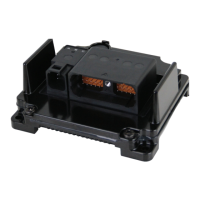
